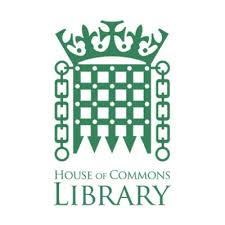House of Commons Report On Universal Credit
Saturday 05 September, 2020 Written by Andrew Mackley, Roderick McInnes
HOUSE OF COMMONS REPORT - This House of Commons Library briefing paper explores how Universal Credit has coped and changed during the coronavirus crisis so far, and what challenges lie ahead for this benefit. The full report can be downloaded below.
The policy issues in this paper are fast-moving areas which are subject to change. This paper should therefore be read as correct at the date of publication (4 September 2020).
The coronavirus crisis has had a significant economic impact which, in turn, has affected household finances – and will continue to do so. Since the early stages of the public health response in mid-to-late March, there has been an increased reliance on the UK social security system, and Universal Credit in particular.
The Government has introduced a series of measures which have served to alleviate demand on the benefits system to some extent. In particular, the Coronavirus Job Retention Scheme (CJRS) and the Self-Employment Income Support Scheme (SEISS) have between them attracted more than 10 million claims.
Nevertheless, significant new demand has fallen on Universal Credit as the UK welfare system’s main ‘safety net’ for working-age people.
Universal Credit
Universal Credit (UC) is a means-tested benefit which is in the process of replacing six existing benefits and tax credits for working age households. It is available to those who are in-work but on low incomes, as well as those who are unemployed or whose capability for work is limited by sickness or disability. It was introduced by the Coalition Government from 2013 in order to simplify and streamline the benefits system, improve incentives for work, tackle poverty, and reduce fraud and error.
UC has been available in every part of the UK since December 2018 and is now the only option for any working-age individual or family wishing to apply for a means-tested benefit. In March 2020, 3 million people were on Universal Credit, but the numbers have risen substantially during the coronavirus crisis, reaching 5.6 million people by July 2020.
Impact of coronavirus
In the early stages of the coronavirus crisis, there was a sharp increase in UC claims. In the four-week period ending on 9 April, 1.2 million people in Great Britain started a UC claim – around a million more than the usual volume of monthly claim starts – and by a further 1.1 million in the five weeks ending on 14 May.

Overall, 2.9 million new claim applications for Universal Credit were made between 16 March and 9 July (the latest date for which we have figures). The daily volume of new claims peaked at 135,900 on Friday 27 March. Since then, application volumes have gradually subsided, although in June and early July were still around 25% higher on average than the pre-crisis levels of February and early March.

Universal Credit under pressure
This increased demand has placed huge operational pressures on the Department for Work and Pensions (DWP). Initially, UC came under criticism from new claimants regarding the length of time they had to wait to verify their identity by telephone.
In response, the DWP acted to adapt services and to reallocate resources in order both to meet new demand and to facilitate social distancing. This included redeploying nearly 10,000 staff within the DWP and from other Government departments to assist with the processing of new claims. As a result, the DWP has reported that 96% of new UC claims during the assessment period covering 9 April received their full first payment on time, which it was noted, was an improvement on the figure of 88% of payment timeliness in March 2020.
Subsequently, Universal Credit, and DWP staff in particular, have received praise from various quarters, including in recent reports from the Work and Pensions Committee and the House of Lords Economic Affairs Committee. It has been noted that the digital and automated structure of the benefit, combined with the temporary changes made by the DWP, has enabled the system to withstand a sudden increase in demand where legacy systems may have struggled.
Changes made to Universal Credit
In order to ease and speed up access to Universal Credit, the Government made a number of temporary policy changes, in addition to the operational changes. These included:
- An increase to the standard allowance of Universal Credit (and to the basic element of Working Tax Credit), so that claimants of Universal Credit and WTC now receive up to £20 more a week. Local Housing Allowance Rates were also uplifted.
- Allowing UC (and ESA) claimants who were ‘affected’ by coronavirus (i.e. anyone with Covid-19 or required to self-isolate or looking after a child of such a person) to be treated automatically as having limited capability for work, without having to obtain a ‘fit note’ or to undergo a Work Capability Assessment.
- Suspending conditionality – conditions such as work-search requirements and attending regular interviews at jobcentres were suspended temporarily (although starting from July they are being gradually reintroduced).
- Suspending face-to-face assessments and Jobcentre appointments, and pausing disability benefit reassessments.
- Suspending deductions for certain kinds of debt.
- Suspending the ‘Move to Universal Credit’ pilot which had been testing the final phase of Universal Credit caseload rollout (‘managed migration’) in Harrogate.
The DWP has been clear, however, that these policy changes were only meant to be temporary during a moment of acute crisis. The Secretary of State for Work and Pensions stated in May that it was not her intention “to change the fundamental principles or application of Universal Credit”.
Calls for further change
Despite these policy changes, as well as the Government’s express intention not to alter the fundamental design and architecture of Universal Credit, there have been further calls to reform UC to support households more effectively during the crisis.
These have included:
- Measures to mitigate the ‘five-week wait’ for the first payment of Universal Credit, either by making UC advances non-repayable during the crisis, or by pausing deductions for advances.
- Suspending limits on eligibility and entitlement, such as:
- The ‘capital rules’, which mean that people who have more than £16,000 in savings are not eligible to claim UC;
- The ‘No Recourse to Public Funds’ rules, which mean that many non-EEA nationals cannot claim benefits;
- The ‘benefit cap’, which limits the total amount of benefit a household can receive; and
- The two-child limit, under which a household will not receive an additional amount in their award for a third or subsequent child born on or after 6 April 2017.
- Increasing the generosity of Universal Credit payments beyond the rise in the standard allowance, such as an increase in the child element.
- Help for former legacy benefit and tax credit claimants who applied for Universal Credit in light of Government guidance, without realising that their existing benefits would stop, and that they might be left worse off.
Future challenges for Universal Credit
Universal Credit, and the wider benefits system, will be part of the Government’s overall policy response to prevent financial hardship and support people back into employment as part of the economic recovery.
UC’s ongoing role as the main safety net for new benefit claimants is likely to gain further prominence from late 2020. The CJRS and the SEISS are due to close in October 2020, and the Office for Budget Responsibility (OBR), in its Fiscal Sustainability Report published in July, assumes that the proportion of employees moving from the CJRS to unemployment will be between 10 and 20%. The Resolution Foundation has predicted “significant claims for UC” following the end of the CJRS. Moreover, the £20 a week increase to the UC standard allowance is designed to be temporary and is expected to apply only until the end of the 2020/21 financial year.
There are also challenges ahead with the resumption of employment support and conditionality within Universal Credit. This is especially the case in a context of ongoing social distancing requirements, but also with a weaker labour market. The DWP has received additional funds to double the number of work coaches across Great Britain by the end of 2020/21, and has plans to hire 4,500 of them by the end of October this year. In July, it also announced new employment support measures, aimed particularly at supporting young people into the labour market as part of the Government’s ‘Plan for Jobs’.
Finally, the DWP’s ‘Move to Universal Credit’ pilot in Harrogate – in advance of the final ‘managed migration’ phase of UC rollout – remains suspended, and the Department has not yet indicated when it might resume. Before the outbreak of coronavirus, the DWP had revised its forecast for completing the full caseload rollout of UC to September 2024. The Department has not said what effect, if any, the crisis will have had on this forecast.
By May this year, the number of households on UC had surged to 4.2 million which, prior to the coronavirus outbreak, is broadly where the DWP had expected the UC caseload to be with managed migration in 2022/23. The OBR has noted, however, that a higher caseload might also mean that the DWP has less capacity to migrate the remaining cases from the legacy system.

- Commons Research Briefing CBP-8999
- Authors: Andrew Mackley, Roderick McInnes
- Topics: Benefits, Diseases

ABC Comment, have yoyr say below:

Please read the full report which can be downloaded below:
